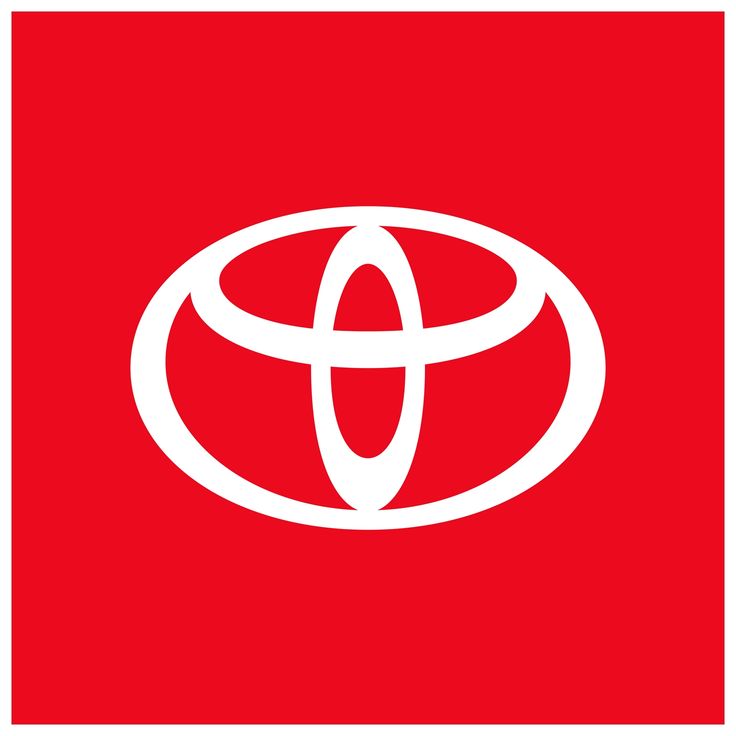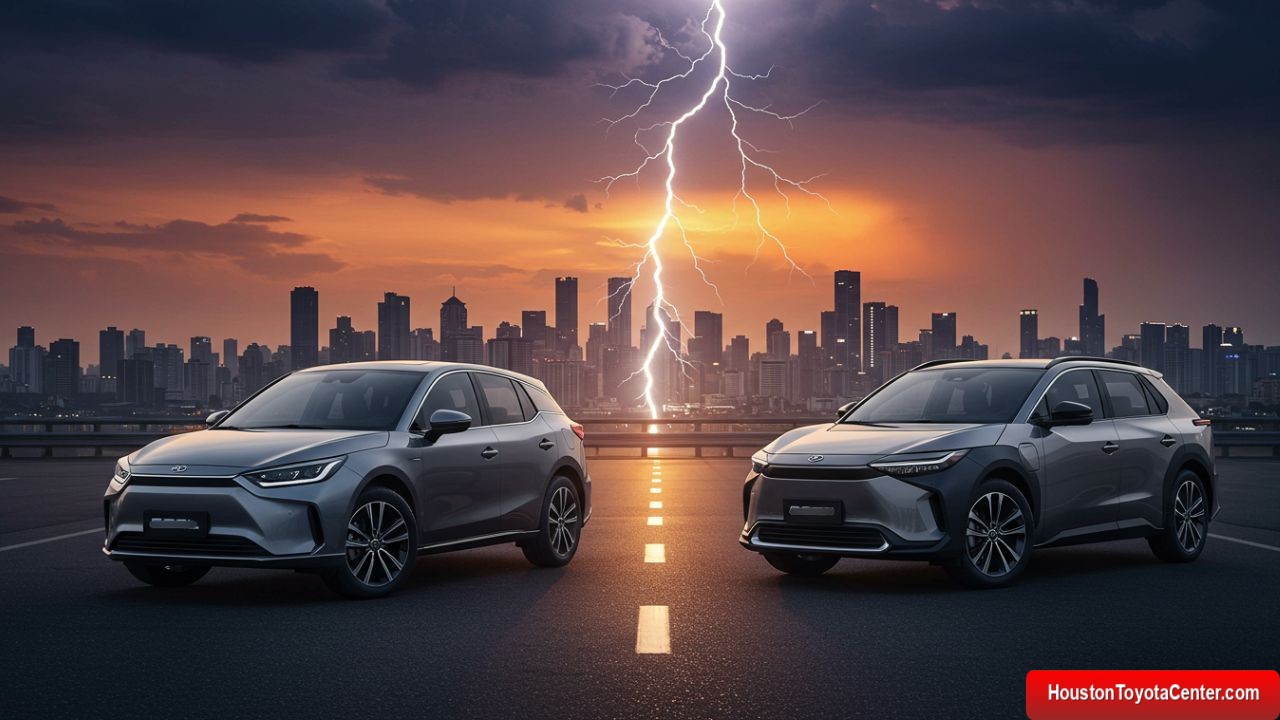Over the past decade, the global auto industry has undergone a seismic transformation. At the heart of this revolution lie two dominant forces from Asia: BYD (Build Your Dreams) from China and Toyota Motor Corporation from Japan. While Toyota has long been the reigning king of hybrid technology, BYD is rapidly becoming an electric vehicle (EV) powerhouse — not just in China but globally.
This article offers a deep comparison of their electric and hybrid strategies, technologies, products, market positions, and future outlooks.
Brand DNA: A Quick Background
Toyota built its reputation on reliability, efficiency, and long-term planning. With the introduction of the Prius in 1997, it became a pioneer of hybrid technology. Yet, Toyota has been more cautious with all-electric models, focusing instead on refining its hybrid and plug-in hybrid platforms.
BYD, on the other hand, began as a battery manufacturer before transitioning to car production. Founded in 1995, it entered the EV market aggressively, aligning with China’s push for clean energy. In recent years, it has become a global EV juggernaut, outpacing rivals with vertical integration and rapid innovation.
FREE: Quickly identify and understand problems with your vehicle 🚘
CLICK HEREStrategic Philosophy: Electrification Paths
| Brand | Focus | Core Strategy | Battery Development | EV Timeline |
|---|---|---|---|---|
| BYD | Full Electrification | Battery EVs (BEVs), Plug-in Hybrids (PHEVs) | In-house (Blade Battery, LFP) | EVs since 2008 |
| Toyota | Hybrid-first | Hybrids (HEVs), Plug-in Hybrids (PHEVs), Limited BEVs | Outsourced + in-house (Solid-State R&D) | EVs since 2020 (bZ4X) |
- BYD pushes forward with a battery-first philosophy. It owns blade battery production, giving it better control over costs, safety, and innovation.
- Toyota continues to hedge its bets. While its hybrid portfolio is unmatched, it has only recently leaned into all-electric platforms with the bZ series.
Key Electric Vehicle Lineups
🔋 BYD Electric Models
BYD’s EV portfolio is vast and growing. Some of its top BEVs include:
- BYD Seal – A direct Tesla Model 3 competitor with strong performance.
- BYD Dolphin – A compact hatchback with affordability as a key selling point.
- BYD Han EV – A luxury electric sedan with cutting-edge tech.
- BYD Atto 3 – A compact SUV aimed at global markets (especially Europe and Australia).
- BYD Tang EV – A larger SUV with dual-motor AWD.
BYD’s e-platform 3.0 allows for integrated electric drivetrains, vehicle-to-load (V2L) capability, and fast-charging efficiencies.
⚡ Toyota Electric Models
Toyota’s full-EV lineup is more limited:
- Toyota bZ4X – The brand’s first major electric crossover.
- Lexus RZ 450e – A luxury EV under its Lexus arm.
- Toyota bZ3 – A China-only EV co-developed with BYD (important synergy here).
- Future Models – Toyota has committed to releasing 10 new BEVs by 2026.
Toyota is also investing heavily in solid-state battery technology, aiming for higher energy density and faster charging times by the late 2020s.
Hybrid and Plug-in Hybrid Leadership
🌿 Toyota Hybrid Dominance
Toyota has long dominated the hybrid space with models such as:
- Toyota Prius – The poster child of hybrid efficiency.
- RAV4 Hybrid and RAV4 Prime (PHEV) – Highly popular in North America.
- Camry Hybrid – A reliable midsize hybrid sedan.
- Corolla Hybrid – A fuel-efficient compact sedan.
- Highlander Hybrid – A 3-row SUV hybrid option.
Toyota has sold over 20 million hybrids globally, far outpacing any other automaker.
🔌 BYD Plug-In Hybrids
BYD’s DM-i and DM-p hybrid systems (Dual Mode Intelligent and Performance) are engineered for electric-first driving with gasoline backup. Key models include:
- BYD Qin Plus DM-i – A fuel-sipping sedan with up to 1,200 km range.
- BYD Song Plus DM-i – A popular PHEV SUV in China.
- BYD Tang DM-p – Performance-oriented 3-row SUV.
- BYD Destroyer 05 – A sporty-looking plug-in hybrid sedan.
BYD’s plug-in hybrids are gaining traction in emerging markets where charging infrastructure remains limited.
Technology: Battery, Platforms, and Efficiency
🔋 Battery Tech
BYD:
- Proprietary Blade Battery uses LFP chemistry.
- Known for thermal stability, high lifespan, and no fire risk.
- Used across BYD EVs and PHEVs.
Toyota:
- Mostly NMC batteries in the bZ4X and hybrids.
- Developing solid-state batteries with higher density and ultra-fast charging (still in R&D phase).
🛠️ EV Platforms
- BYD’s e-Platform 3.0 is purpose-built for EVs: integrated motor control units, higher range, and fast-charging.
- Toyota’s e-TNGA is a shared platform (used for bZ4X), but not as optimized or modular as BYD’s platform.
Global Reach and Expansion Plans
| Metric | BYD | Toyota |
|---|---|---|
| 2024 EV Sales (Est.) | 3.7 million (BEV + PHEV) | ~0.4 million (BEVs only) |
| Countries Active In | 60+ | 170+ |
| North American Market | Entering Canada, Mexico | Established with dealer network |
| European Focus | Strong growth in Norway, Germany | Starting with bZ4X, Lexus EVs |
| Factory Expansion | Brazil, Hungary, Thailand, Indonesia | U.S., Japan, China, and joint ventures |
BYD is targeting Southeast Asia, Europe, and Latin America with aggressive pricing. Toyota is focused more conservatively, ensuring infrastructure and regulations align with its product rollout.
Affordability and Consumer Options
One of BYD’s greatest strengths is affordability.
- BYD Dolphin starts under $25,000 USD in many markets.
- BYD Seal delivers Tesla Model 3-like specs for around $30,000–$35,000 USD.
- Toyota’s bZ4X often retails around $42,000+, depending on the market and trim.
BYD is winning over price-sensitive markets by offering more for less, while Toyota continues to command a premium for dependability and legacy support.
Charging Infrastructure and Ecosystem
Toyota lacks a dedicated charging network, instead relying on third-party partners (e.g., EVgo, ChargePoint). BYD, in China, offers proprietary charging services but globally relies on partners or home installations.
BYD’s cars often support bi-directional charging, while Toyota has only begun testing this tech.
Environmental and Sustainability Policies
Both companies are pushing sustainability:
- BYD stopped producing purely gasoline vehicles in 2022.
- Toyota aims for carbon neutrality by 2050, with an 80% reduction in CO2 across life cycles.
However, critics argue Toyota’s continued reliance on hybrids delays true zero-emission transitions.
Head-to-Head Summary
| Category | Winner (2025) | Why |
|---|---|---|
| EV Variety | BYD | More BEV models across more segments |
| Hybrid Efficiency | Toyota | Proven platforms and reliability |
| Plug-in Hybrid Strategy | BYD | DM-i tech is electric-first and widely adopted |
| Battery Innovation | BYD | Blade Battery is mass-produced and highly rated |
| Future Tech (Solid-State) | Toyota | Promising R&D pipeline (not yet commercialized) |
| Global Sales (EVs) | BYD | Surpassed Tesla and all legacy OEMs in 2023–2024 |
| Affordability | BYD | Cheaper EVs and hybrids with great features |
| Dealer Network | Toyota | Stronger service infrastructure globally |
| Brand Trust (Long-term) | Toyota | Decades of consumer confidence |
| Sustainability Commitments | Draw | Different strategies, same net-zero goal |
The Future: Collision or Collaboration?
Interestingly, BYD and Toyota are not just rivals — they’re partners. The bZ3 EV in China is a direct collaboration between the two, combining Toyota’s platform with BYD’s LFP battery.
This synergy hints at a future where the lines between competition and cooperation blur, particularly as automakers face the immense cost and complexity of electrification.
Expect more such partnerships as legacy brands look to agile innovators like BYD for cutting-edge battery and EV tech — while brands like BYD tap into Toyota’s decades of refinement, safety, and market reach.
Conclusion
BYD and Toyota represent two paths to the same electric future. While BYD is rapidly redefining what’s possible in affordable, high-volume EVs, Toyota continues to build trust through hybrids and long-term technological bets.
- BYD is the current leader in electric mobility volume.
- Toyota is the master of hybrid durability and global brand power.
Whether you lean toward the innovation and speed of BYD, or the reliability and long-term vision of Toyota, the electric future is being shaped by both — in ways that will impact global markets for decades to come.


Leave a Reply